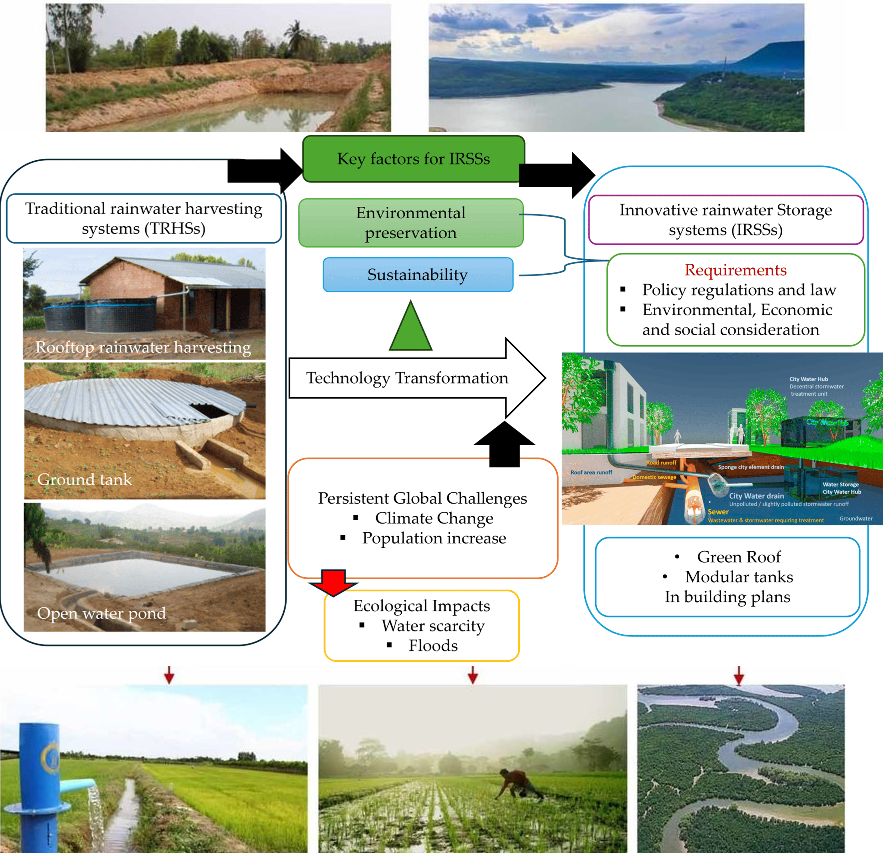
Introduction:
Water scarcity is an escalating global issue, and drought-prone areas are particularly vulnerable. Developing cost-effective water storage systems is crucial for these regions to ensure a reliable water supply during dry periods. Here are some innovative and affordable solutions that can make a significant difference.
Rainwater Harvesting:
Rainwater harvesting is one of the most efficient and low-cost methods to store water. This technique involves collecting and storing rainwater from rooftops, surface catchments, or rock catchments. The harvested water is then stored in tanks, barrels, or cisterns for later use. Simple modifications, such as installing gutter systems and downspouts, can significantly increase the volume of collected rainwater. Moreover, rainwater is generally clean, reducing the need for extensive filtration and making it suitable for various uses, including irrigation, livestock watering, and even drinking if properly treated.
Small-Scale Reservoirs:
Small-scale reservoirs, also known as farm ponds or micro-dams, are another effective solution for water storage in drought-prone areas. These structures can capture and store runoff water during the rainy season, which can then be used during dry spells. The construction of small-scale reservoirs is relatively inexpensive and can be undertaken by local communities using locally available materials. Additionally, these reservoirs can be integrated with irrigation systems, enhancing agricultural productivity and reducing the impact of drought on food security.
Sand Dams:
Sand dams are a sustainable and cost-effective method of water storage that is particularly suitable for arid and semi-arid regions. A sand dam is a sturdy concrete barrier built across a riverbed that flows seasonally. During the rainy season, the dam captures and holds back sand and sediment carried by the river. As the riverbed fills with sand, water is stored in the sand particles’ pore spaces, effectively creating an underground reservoir. The stored water is protected from evaporation and contamination, and can be accessed through shallow wells or hand pumps. Sand dams require minimal maintenance and can last for several decades, providing a reliable source of water for local communities.
Underground Water Tanks:
Underground water tanks are an efficient way to store large quantities of water without occupying valuable surface space. These tanks can be constructed using various materials, such as concrete, plastic, or fiberglass. Underground tanks protect stored water from evaporation, contamination, and temperature fluctuations, ensuring a consistent supply of water throughout the year. They can be connected to rainwater harvesting systems or filled with water from other sources. Although the initial cost of underground tanks can be higher than above-ground options, their long-term benefits and durability make them a cost-effective solution for drought-prone areas.
Modular Tank Systems:
Modular tank systems are a versatile and scalable option for water storage. These systems consist of interlocking plastic or metal modules that can be assembled to create tanks of various sizes and shapes. Modular tanks are easy to transport, install, and maintain, making them an ideal choice for remote or hard-to-reach areas. They can be used for both rainwater harvesting and storing water from other sources. Additionally, modular tanks can be expanded or reconfigured as needed, providing flexibility and adaptability to changing water storage requirements.
Conclusion:
addressing water scarcity in drought-prone areas requires innovative and cost-effective water storage solutions. Rainwater harvesting, small-scale reservoirs, sand dams, underground water tanks, and modular tank systems are all viable options that can help communities secure a reliable water supply. Implementing these systems can enhance water security, support agricultural productivity, and improve the overall resilience of drought-affected regions. By investing in these affordable technologies, we can create a more sustainable and water-secure future for all.


